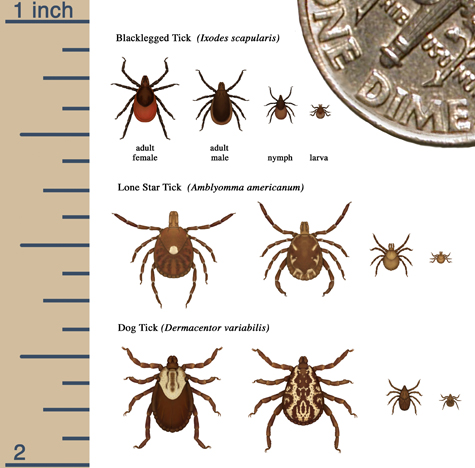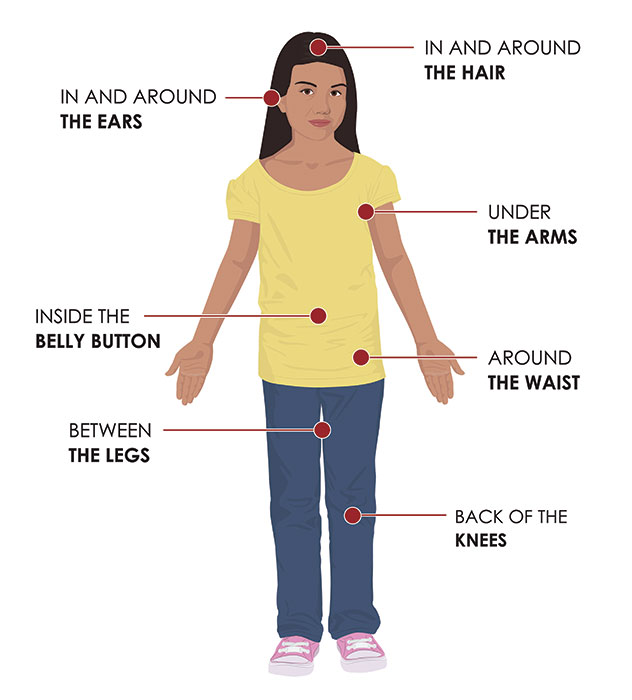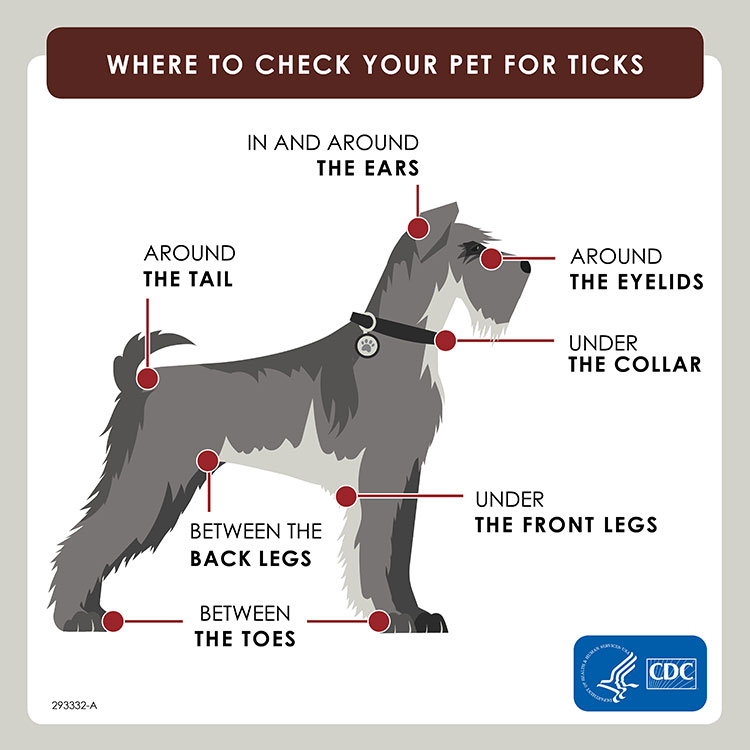Ticks
Ticks are found throughout Maryland. The most common ticks in Maryland are the black-legged tick, the American dog tick, and the lone star tick. For more information about the kinds of ticks in Maryland, visit Ticks in Maryland
Ticks are very small – black-legged (deer) ticks can be smaller than a sesame seed!
Diseases Caused by Ticks
Some ticks can infect humans with disease. Some “tick-borne” diseases can be serious. See a list of tick-borne diseases in Maryland.
Not every tick bite causes disease, but it is important to know the symptoms of tick-borne diseases, such as fever, aches, and sometimes a rash. Talk to your healthcare provider as soon as possible if you think you might have a tick-borne disease.
Get “Ticked Off”
Take steps to prevent tick bites.
When you go out:
- Look for ticks in the late spring through early fall, when they are most active.
- Ticks are most common in grassy, bushy, or wooded areas.
- When hiking, stay in the center of the trail.
- Wear long pants and long sleeves when you are outside.
- Tuck your shirt into your pants, and your pants into your socks, to keep ticks on the outside of your clothes.
- Use an EPA-recommended repellent. Parents should put repellent on their children, avoiding the hands, eyes, and mouth. EPA Repellent Search Tool
- If you are outside often, consider treating your clothes with permethrin, a repellent for clothing (not to be used directly on skin). You can also buy clothes that are already treated with permethrin.
Remember there can be ticks in your yard, so take the same precautions when gardening or playing outdoors. Learn how to create a tick-safe yard on our Fight the Bite page.
When you come inside, check for ticks on people:
- Check your clothing for ticks. Dry clothes on high heat for at least 10 minutes to kill ticks. Or wash clothes in hot water, then dry.
- Check your body for ticks. Conduct a full body check when you get inside. Use a hand-held or full-length mirror to view all parts of your body. Remember that ticks are very small.
- Check these parts of your body and your child’s body for ticks:
- Shower soon after being outdoors. Showering can help wash off unattached ticks and it is a good time to do a tick check.
- If you find a tick, remove it with fine-tipped tweezers. Dispose of the tick by placing it in a sealed bag or container wrapped in tape or submersing it in alcohol. You may want to save it for identification.
See instructions below on how to remove a tick safely.
Check your pets for ticks, too.
To prevent ticks in your yard, visit the CDC’s Preventing Ticks in the Yard page.
For information on preventing both tick and mosquito bites, visit our Fight the Bite page.
If you find a tick
To remove a tick:
- Use fine-tipped tweezers and protect your hands with a tissue or gloves.
- Grab the tick close to the skin with the tweezers. DO not twist or jerk.
- Do NOT use petroleum jelly, a hot match, nail polish, or other products to remove ticks.
- Gently pull up until all parts of the tick are removed. Hold your skin with your other hand.
- Wash hands and bite area with soap and water, or iodine or rubbing alcohol.
- Never crush a live tick with your fingers. You can flush it down the toilet. If you want to save it for identification, put it in alcohol or a sealed bag or container.
If you would like to have the tick identified, you can send it to the University of Maryland Tick Identification service. You may also submit a photo and information about the tick to TickSpotters. If you would like the tick tested for disease, you may send it to TickReport, but there is a charge for this service.
If you or your child develop any symptoms after a bite or exposure to mosquitoes or ticks, call your healthcare provider. Pictures of the bite or rash may help with the diagnosis. Signs and symptoms to watch for include:
-
- Fever
- Rash
- Body and muscle aches
- Joint pain
- Fatigue
- Headache
- Stiff neck
- Paralysis
Early treatment of tick-borne diseases can reduce the risk of more serious illness.
Lyme disease is the most common tick-borne disease in Maryland. See our Lyme disease page for more information.
For more information on tick bites:
TickEncounter Resource Center at the University of Rhode Island




